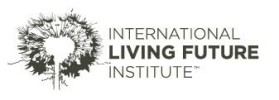The Verifier will review and confirm compliance with applicable LBC Imperatives, including Healthy Interior Performance and Responsible Sourcing, which are each referenced separately on the label.
I-14 Responsible Sourcing Verification
Confirmation of responsible wood sourcing claims, if applicable. See Responsible Sourcing clarifications below.
“Product Available with FSC Chain of Custody”
Documentation: Final manufacturer’s FSC Chain of Custody certificate
*The Verifier will verify that the manufacturer has FSC Chain of Custody certification, allowing the manufacturer to designate “Product Available with FSC Chain of Custody”. While manufacturers may directly market or promote their products elsewhere as FSC certified, the specific language of this Imperative compliance both communicates the need for due diligence and clarifies that not all of the available product will carry FSC Chain of Custody certification. LBC project teams should understand that they will need to either purchase the product directly from the manufacturer or from a certified retailer. *
“FSC Chain-of-Custody certification traces the path of products from forests through the supply chain, verifying that FSC-certified material is identified or kept separated from non-certified material throughout the chain. Any company in this supply chain, including harvesters, processors, manufacturers, distributors, printers, retailers* or anyone that is taking ownership of the forest product before the end user, needs to be FSC certified to be able to label or promote their products as FSC certified.” – Forest Stewardship Council
A chain of custody certificate is required for the millwork shop, as well as for any operation that manufactures or processes the timber product. Brokers or agents, who take neither physical nor legal possession of the products do not need to become COC certified.
Retailers must be FSC certified to transfer the FSC claim on products if they are selling to building contractors or to consumers who will be reporting their purchase of FSC-certified material for programs such as LBC and LEED. With respect to retailers, “product” refers to an item that will not undergo any further modification prior to arriving on the project site.
Types of Chain of Custody:
Certificates noting either of the following are acceptable:
- FSC 100% – FSC-certified virgin material originating in FSC-certified forests or plantations that has not been mixed with material of another material category throughout the supply chain.
- FSC Mix Credit – For materials with an FSC Percentage Claim (e.g. FSC Mix XX%), only the % of material that is designated (e.g. XX%) counts toward FSC COC count. The remaining non-FSC COC wood must come from low risk sources (see below).
Salvaged Wood Content
Documentation: Receipts from the seller/broker or demonstrating the manufacturer’s purchase of all salvaged wood procurements should be presented.
Salvaged wood is defined as wood that has already been extracted from the forest and used for some purpose. An example is used building materials that can be repurposed wholly in their current form or with slight refurbishment.
Low Risk Wood (LBC 4.0 only)
Low risk wood is defined as that coming from a source country with a score of 80 or higher as reported on the Nature, Economy and People Connected Tool, where the country has laws and a low rating for both the CITES (Convention on International Trade in Endangered Species of Wild Fauna and Flora) and Protected Sites and Species Sub-categories, and laws in at least 13 additional Sub-categories, including one law in each of the five Legal Categories.
LBC Low Risk Countries w NEPCon Score 80 or above
Updated December 2019
- Denmark
- New Zealand
- Finland
- Sweden
- Switzerland
- Norway
- Canada
- Germany
- United Kingdom
- Austria
- Belgium
- Estonia
- Ireland
- France
- Czech Republic
- Japan
- Australia
- United States of America
- Lithuania
- Portugal
- Poland
- Latvia
- Korea, South
- Spain
I-14 Exception Compliance
Pending FSC Certification
Wood from entities with pending FSC certification is acceptable if the timber is processed (either harvested or milled, as relevant) after the FSC certification audit (step two of the FSC Steps to Certification) has occurred, even if final certification of the mill or forest is still in progress.
Invasive Species
Wood that does not carry third-party certification but was sourced from either trees infested with invasive species or trees that are an invasive species and need to be removed to maintain the health of a forest is allowed. Allowed: pine beetle wood, Western Juniper, black locust, and for LBC 4.0 only, emerald ash borer wood.
Documentation: An official statement that the targeted species is considered to be invasive or overpopulated in a particular region. The statement must come from a named authoritative body that has made an official assessment, has demonstrated expertise, and does not have a direct commercial interest or other conflict of interest.
A narrative explaining how harvest practices met the extraction standards of the Forest Stewardship Council and ensured effective collection to limit the spread of the invasive species.
Surplus Wood
Donations or purchases of non-FSC surplus wood are acceptable if they are leftovers (vs. stockpiles) from an individual or project, (vs. a commercial wood supplier) and were initially purchased or harvested for some use other than the LBC project.
Storm-Felled Wood
Wood from trees killed in FEMA-designated natural disasters (or international equivalent) is allowed if new trees are planted to replace all the storm-felled trees used in the project. The manufacturer must provide a brief (1-2 page) narrative describing the disaster, why the removal of the wood was necessary and appropriate, and how, when, and where the replacement trees were planted.
Need more help with this?
Don’t hesitate to contact us here.



